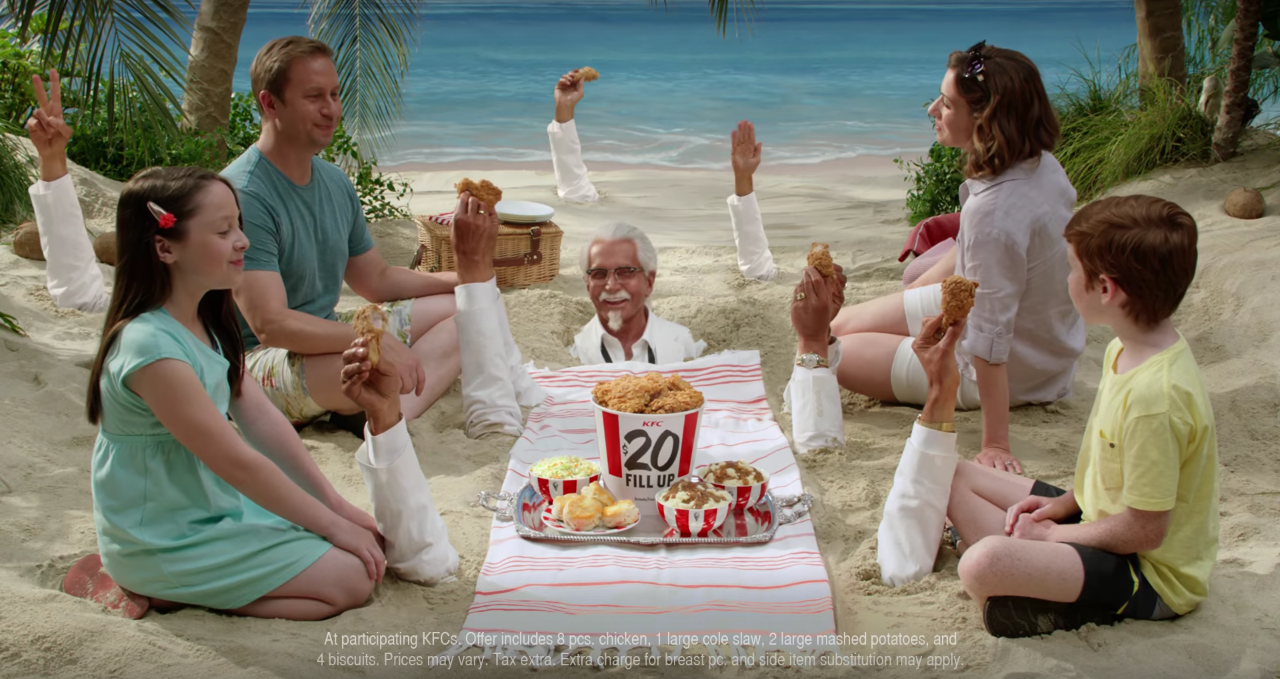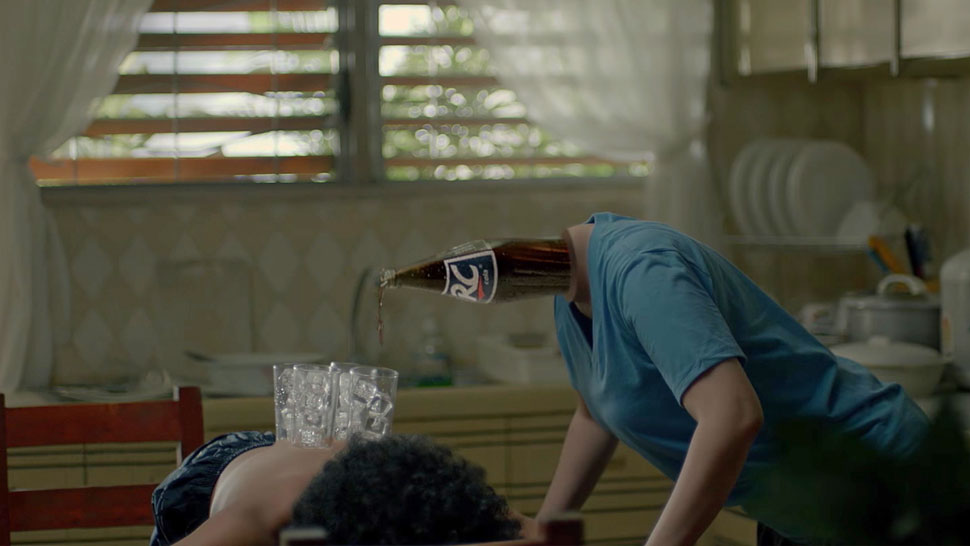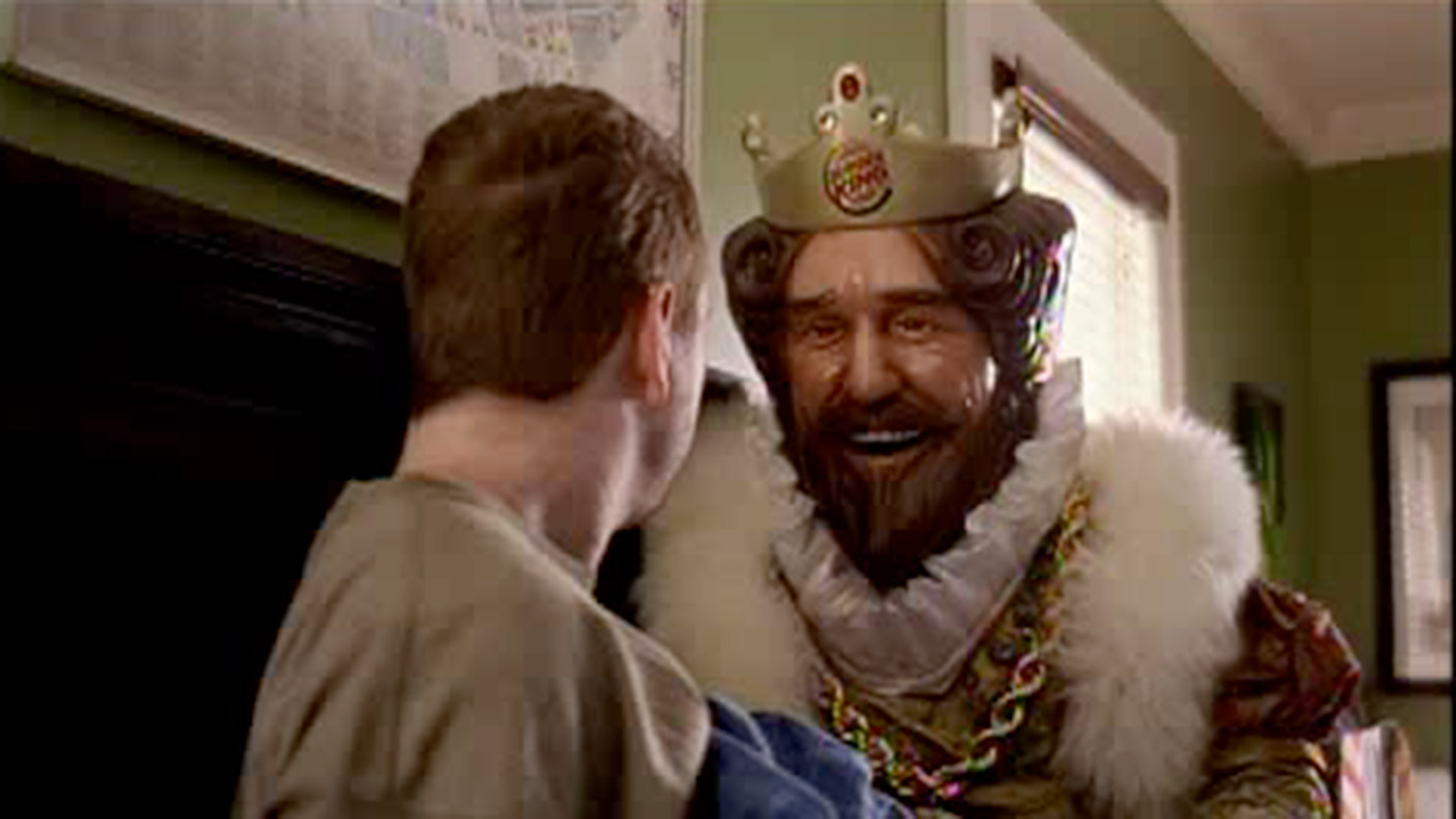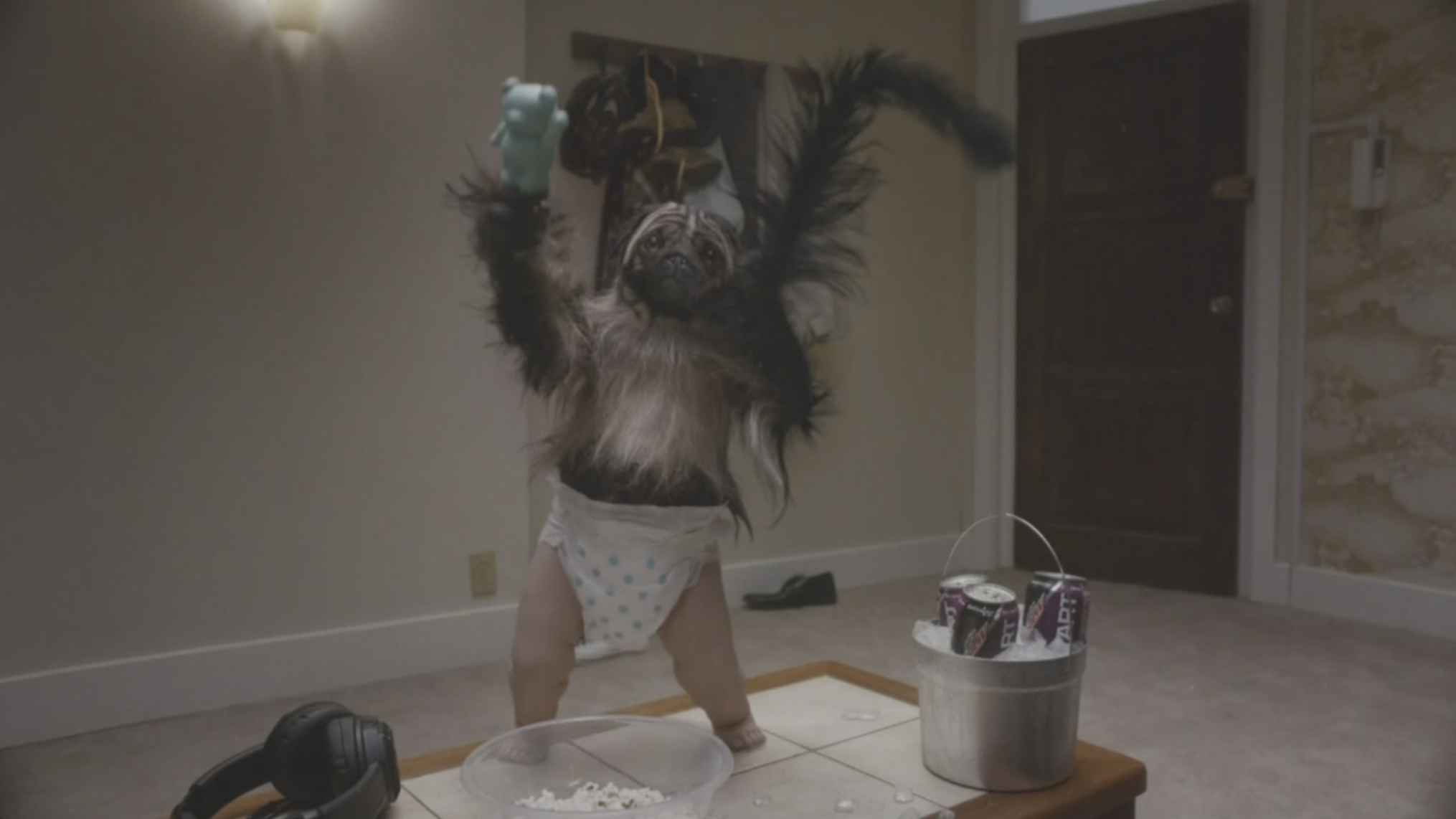The advertising industry is contending with some tough challenges these days. Ad blockers, escalating costs, the rise of new avenues for marketing such as virtual and augmented reality, and an audience whose attention and interest are becoming increasingly harder to capture—all these need to be taken into account if advertisers want to get their message across, let alone have anyone see the ad in the first place.
For some, the solution to stand out has been to inject some weirdness, a strategy aptly called “oddvertising.”
A play on the words “odd” and “advertising,” the word is exactly that: advertising that taps into the quirky, the strange, and the unusual. The term was purportedly coined around the 2000s, in response to a slew of ads about candy, drinks, and fast food that wanted to earn the audience’s attention amid the growing popularity of social media and streaming video platforms like YouTube.
An example of how KFC used oddvertising. Seen here is the colonel growing extra limbs and randomly appearing during a beach vacation. Image source: The American Genius
Consider last year’s viral softdrink RC Cola advertising campaign from Filipino marketing agency Gigil. Titled “Family,” the campaign makes use of absurdity and humor to try to connect with a Gen Z audience while contending with budget constraints and a sugar tax that caused the drink’s cost to substantially increase.
The commercial opened up with a young boy struggling with thoughts that he’s adopted. The next scenes reveal the boy having four glasses on his back and his mother hiding a bottle of RC Cola in her head. Image source: Preview
Image Source: Contagious
Within the first six hours of its launch, the ad went on to record 1.6 million hits, while RC Cola’s sales spiked by at least 67% following the commercial. It later went on to notch a bronze at the Cannes Lions 2021 and landed a feature on The Ellen Show in the US.
At present, any physical object, from a light bulb to a car to industrial machinery, can be connected to this network, effectively bridging the gap between the physical and the digital worlds. This is largely thanks to the availability of inexpensive computer chips along with the ubiquity of wireless networks.
The makers said the ad campaign engaged its target market because of their affinity for “wild, irrational and emotional work” that had humor. What made the viral RC Cola ad successful, however, was not just its bold, absurdist approach. To be sure, there had been many of these odd ads through the years.
Like the Burger King ad called “Wake up with the King” which toed the line between creepy and funny.
In this example, a man wakes up one morning to The King staring over him. After being offered breakfast, the character seemed to have brushed off the fact that The King was watching him sleep. Image source: OneClub
Or the soapy mini-movie campaign for KFC called “A Recipe for Seduction.”
And who could forget the earworm-inducing “Puppy Baby Monkey” ad for Mountain Dew during the Super Bowl in the US in 2016?
In the Puppy Baby Monkey ad, the creatives did a mashup of three in one body: a Pug puppy (the head), a monkey (the torso and tail) and a dancing baby (the hips and legs, complete with a diaper). Image source: CBS Denver
Given these examples, it would seem that any crazy idea from an advertiser’s fever dream would be enough to turn into a memorable ad.
But there is more to a successful oddvertising campaign than this.
Doing It Right (and not right)
Adhomecreative writes: “Adverts can’t just be weird for weird’s sake, they have to have structure; and like every good advertising approach, Oddverts also follows a certain structure that can be followed to help achieve successful results from the targeted audience.”
They suggest that an oddvert commonly has the following characteristics: a deadpan tone, the characters are acting like the alternative reality is normal, and a subject that must be relevant to the brand and be appropriate for the target demographic.
The oddvert deviates from the classic approach of setup and punchline with bizarre variations, surreal incongruities, and outlandish nonsense. By doing so, it draws attention to itself and the product it is trying to sell, while demonstrating its differences with competitors.
Like any other campaign, there are ways in which these oddverts might be seen to be lacking or unsuccessful, despite the strangeness. Take, for example, this Realtor.com ad which many felt missed its chance at the end to make a meaningful statement to tie up the whole thing.
Another ad that did not enjoy the success it hoped for was the Quiznos ad, which many felt did not quite target the right audience.
Thus, at their heart, these ads, odd as they may be, still rely on the traditional requirements for a successful marketing campaign: a well-defined target audience, the right timing, the right placement or venue, a good call-to-action, and lasting impact.
They also still greatly depend on the millennia-old foundations of rhetoric and persuasive argument—appealing to the heart and the brain—to get you to buy what they’re selling.
Crucially, they still require authenticity, which is to say, they have to appear sincere enough to give the audience something such as entertainment or an intriguing storyline, at least. They have to be something more than just an ad that wants to get them to open their wallet.
By luring us in with their absurdity, these oddverts prompt us to let our guard down and watch curiously. With everyone and everything clamoring for our attention, this might just be their best bet at success.
Main image source: Latestly












